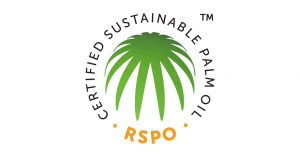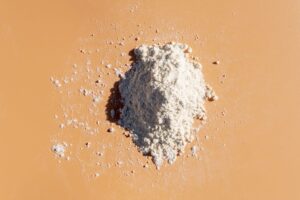Peptide is a small & biological material composed of more than two amino acids with specific biological functions. They have started to be used in large amounts in personal care applications especially for anti-aging and anti-wrinkle efficacy recently.The reason for this include:
- High Skin Penetration Rate
- Small dosage required to achieve desired efficacy
- Cost Efficiency
One unique thing about peptide in personal care application is that it can target different molecules in different area of body and can result in different effects, depending on its composition. The other possible efficacy that can be expected may include anti-acne, anti-inflammation, whitening, hair growth etc.
In order to achieve the desired composition with the desired effect, the stringent peptide synthesis has to be conducted. The tool that is used to make this happen is called ‘protecting group.’Without protecting group, there are always chances to have the different combination as the figure above shows. Hence, the chance to get the desired outcome is lower. However, with protecting group, which ensures there is no random combination of molecules, the chance to get the desired peptide formation becomes higher.
The mainly used protecting groups include Boc Protecting group and Fmoc Protecting group. However, these have so many limitations, and there is an alternative to these : Nsc Protecting Group.The Boc protecting group is a classical peptide synthesis protecting group and was the first useful amine protecting group for solid-phase peptide synthesis, which are commercially very available due to its low cost and availability in solid phase peptide synthesis (SPPS) and liquid phase peptide synthesis (LPPS).
However, this protecting group has several drawbacks: acid cleavage condition, instability, high side reaction, long peptide synthesis.The Fmoc protecting group is a popular choice for SPPS, which was the first major viable alternative to the Boc group for SPPS. Because its removal entails gentler and less hazardous reagents than Boc, it has become mainstream. All of the common amino acids are widely available as their Fmoc derivatives.
On the other hand, using this protecting group incur high cost, and the solubility level is low. In addition to this, this involves high rate of racemization (Conversion of Enantiomer into a mixture of more than one enantiomer, which is also known as racemate), making it more difficult to get the desired composition.
This is the reason why most of the peptides available in the market are expensive, as such kind of protecting group is applied to manufacture peptides.The 2-(4-nitrophenylsulfonyl)ethoxycarbonyl (Nsc) group is a new protecting group that can replace the Boc or Fmoc Protecting Groups. It has many advantages which may include having base cleavage, high solubility, being more polar than Fmoc, and availability in LPPS and SPPS. More importantly, this involves low rate of racematization, which ensures of the purity of peptide formation. This helps one to combine the 2 or more peptides in the correct order and formation, increasing the yield ratio and lowering down the cost of production.
The only issue is that this is the relatively new protecting group for peptide synthesis, and hence, not many are accustomed to use this.
The advantages and disadvantages of each protecting group can be summarized as the following :
| Boc | Advanced | Oldest Protecting Group, good technology, Low Price, SPPS & LPPS | |
| Weakness | Acid Cleavage Condition, Unstable of Side-Chain Protecting Group | ||
| Side-Reaction High | Drawback : Long Peptide Synthesis | ||
| Fmoc | Advanced | SPPS, Most well known protecting group, base cleavage | |
| Easy to Synthesize long peptide synthesis possible (>100 mer) | |||
| Weakness | High price, Low solubility, Non polar, High rate of racemization | ||
| Nsc | Advanced | Base Cleavage, Low price, High solubility, Polar than Fmoc | |
| Low Rate of racemization, SPPS & LPPS | |||
| Weakness | New protecting group, not accustomed to use | ||
Despite the fact that there are not many who are accustomed to use this brand new protecting group, our Supplier, ANPEP, has the patent on using this protecting group to manufacture the several peptide product line for personal care applications. This is something that many peptide manufacturers can do. Be noted that we are able to provide peptides at much competitive prices with the help of our partner.
If you want to learn more about what are the products available, please click below to download the product catalogue.If you are interested and willing to learn more about the product, please contact us via button below.



